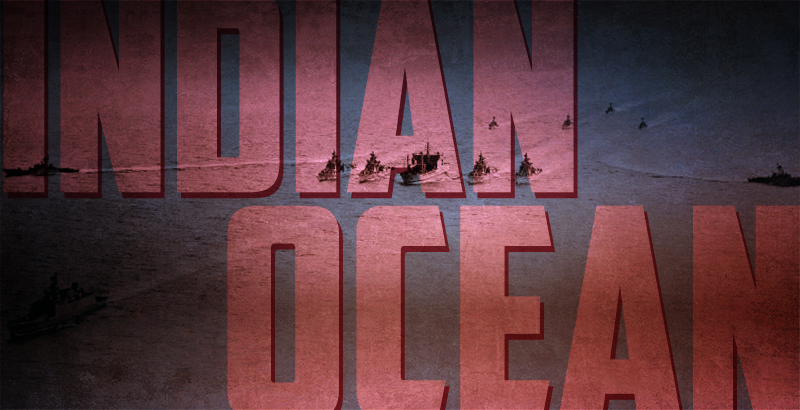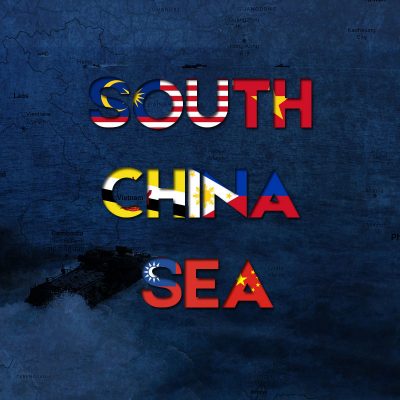
Written by Ninoto exclusively for SouthFront; Edited by Brian Kalman
Over the past decade, the Indian Ocean Region (IOR), has emerged as the new focus of attention in the ever shifting geo-political and strategic struggle for dominance. With the growing clout of India and China in the global arena, the world superpowers, particularly the US, have had their attention drawn to the trade and military developments in the IOR. The spotlight is on China, following its claims on the contested islands in the South China Sea and its naval assertiveness in the IOR. India increasingly finds itself surrounded by littoral neighbours whose rising association with China is seen as a threat.
In the eastern part of the Indian Ocean, the US military is positioned in Singapore, Malaysia and the Philippines. This is in addition to its economic and strategic relationships with other smaller Southeast Asian nations, most of whom run for cover under the protection of the US against China’s territorial assertions. Along with the presence of its French NATO ally on Reunion Island and through its military base on Diego Garcia, the US can effectively influence strategic manoeuvres across the entire axis of the Indian Ocean. The US has thus situated itself at vantage points all over the region, compelling China to recalibrate its future course of action in the Indian Ocean. Currently, approximately 80% of China’s critical petroleum and oil imports are routed through the straits of Malacca, in Malaysia. China, from a strategic stand point, urgently needs to reroute a portion of this traffic.
The presence of US military in the Indian Ocean does not concern India much, for the reason that India lacks the necessary hardware and political support to effect any outcome whatsoever even if it desired. The same can be said about India’s attitude towards Russia’s presence in its oceans. India at present lacks a long term trajectory on its future actions in the Indian Ocean and its response is only a reaction to China’s show of strength in the region. While the Indian Navy is devoid of blue water capabilities, India is wary of China’s long term objectives in the region and realizes the dangers of being overwhelmed by China’s superior military and economic power. Consequently, India is rapidly modernizing and upgrading its naval forces to restore an equitable balance with China. In recent years, India is increasingly holding joint naval exercises with the US and its allies, and this is causing much irritation for China.
India’s primary contention with China, is the perceived “String of Pearls” policy, where China is developing military ports in the littoral nations surrounding India. Beginning from Sittwe in Myanmar to Lamu in Kenya, connecting through its ports in Bangladesh, Sri Lanka, the Maldives, Pakistan and Sudan, China effectively encircles India on the high seas. This development is viewed by Indian policy experts as the strategic encirclement of India, which will be used detrimentally against India in times of conflict. It will also give China an upper hand in its bargaining position with India over economic and territorial contestations. The finances for the ports are already secured and in a few years the ports will be operational.
The growing Nexus between China and Pakistan is also worrying for India. China signed the China Pakistan Economic Corridor (CPEC) agreement, through which it will invest $46Bn in developing connectivity and infrastructure across Pakistan. The main objective of China here is to secure direct access to the Indian Ocean, through the port of Gwadar in Pakistan, which it will help develop. The Pipelines constructed will allow China to route its oil imports from the Persian Gulf and Africa, over land via Pakistan and Kashmir, and then to Kashgar, in China’s north-west province of Xinjiang. In conjunction with its Silk Road initiative, Kunming-Sittwe corridor, and a slew of other policies, China is aggressively working towards significantly reducing its trade through the US-dominated Strait of Malacca, having passed through the Indian Ocean.
In this prevailing strategic tension between India, China and Pakistan, the US seeks to leverage India’s position, in complement to its Pivot Asia policy. The US desires India to develop itself as a key regional player and partner by enhancing India’s influence over the neighbouring littoral states and strengthening India’s naval capabilities. To further its interests, the US lures India with the attractive proposition of acquiring its high-tech military hardware and advanced maritime technologies. While so far, India remains steadfast to its commitment of non-alignment, escalation of tensions could coerce India into re-evaluating this long standing position.
Faced with this strategic quagmire, the renewed presence of the Russian Navy will be a welcome development for India. Russia’s presence in the region is currently limited to annual bilateral naval exercises, but in the future, when faced with limited options in the west due to sanctions and the overwhelming build-up of NATO forces, Russia could consider ramping up its presence in the Indian Ocean. However, the absence of direct access to the Indian Ocean acts as a deterrent for Russia. Nevertheless, given the dynamic nature of geo-political relationships, Russia could acquire for itself a stronghold in one of the littoral nation states in the IOR, through concerted diplomacy and partnerships.
There is; however, an alternative way out as opined by some experts. Vast opportunities lie in the IOR, in which all stakeholders concerned can benefit through cooperation and avoiding conflicts. India need not view China’s resurgence as hostile, and likewise, China need not vex itself regarding India’s intentions. India and China both draw blanks when compared to the US, whether it be economic or military aspects, and they could only gain by standing together. In fact, India and China could lead a new front from the IOR to balance the US led strategic partnerships building up around the globe. Such a scenario can offer a new and desirable narrative in the asymmetrical world order of today.




